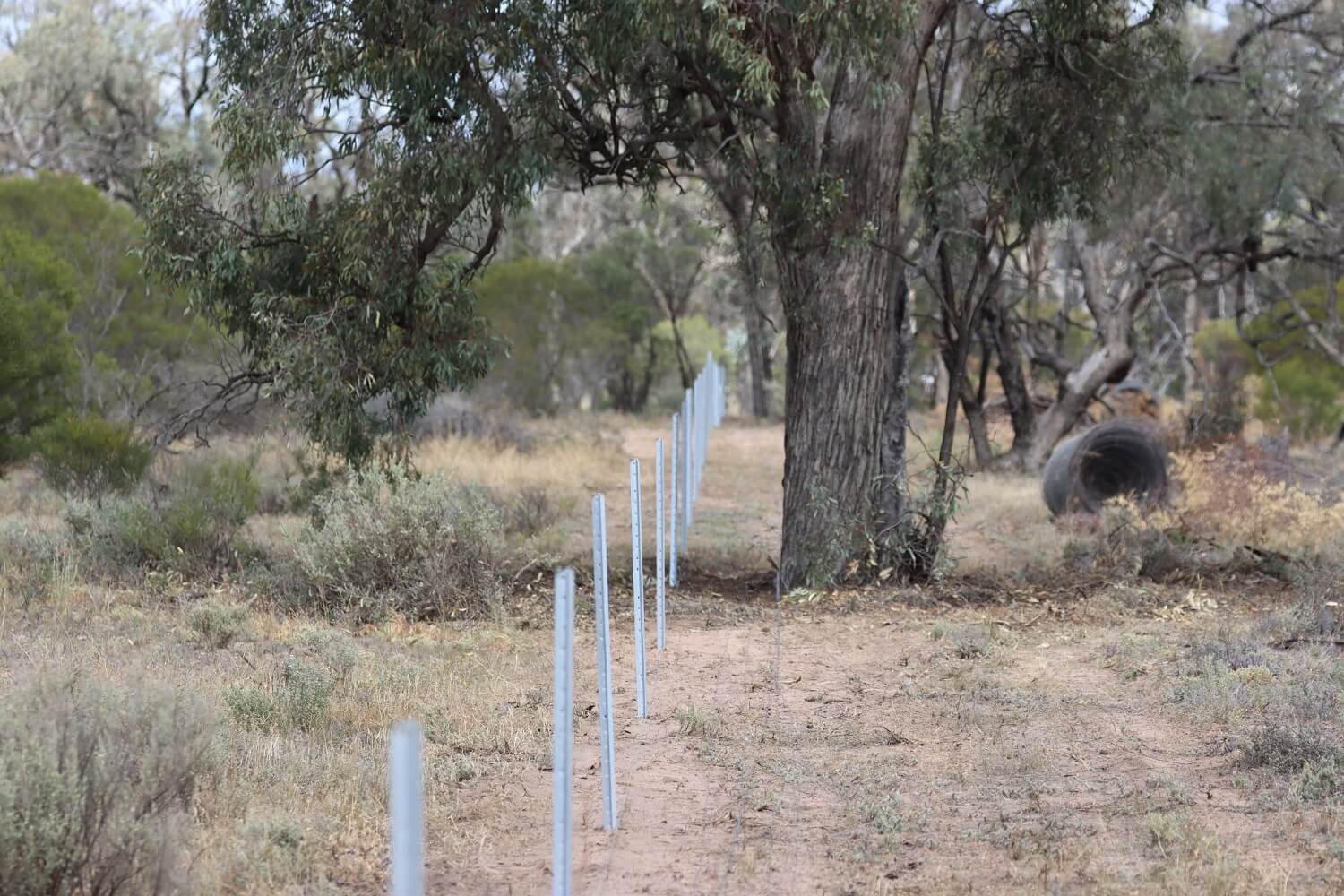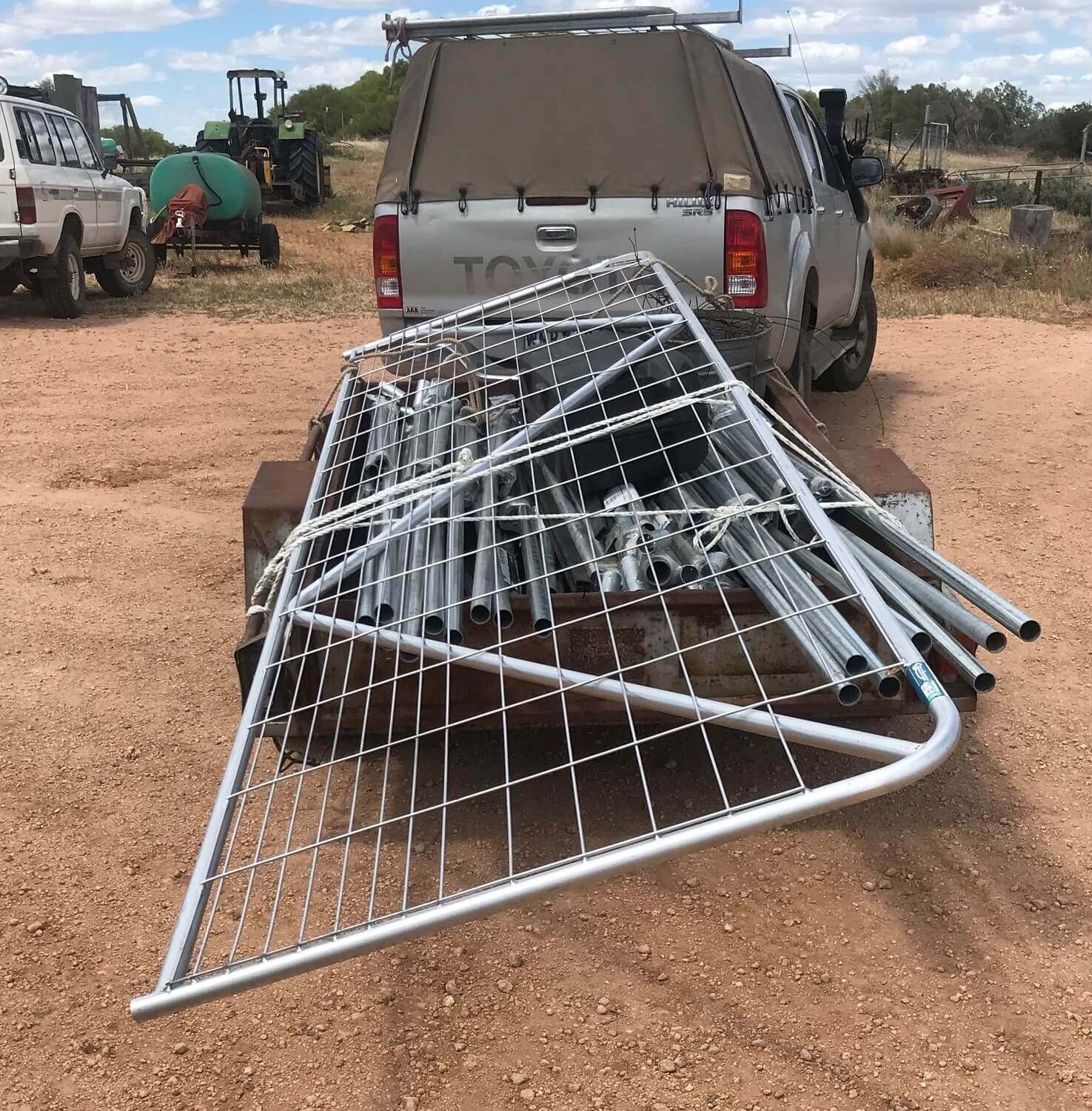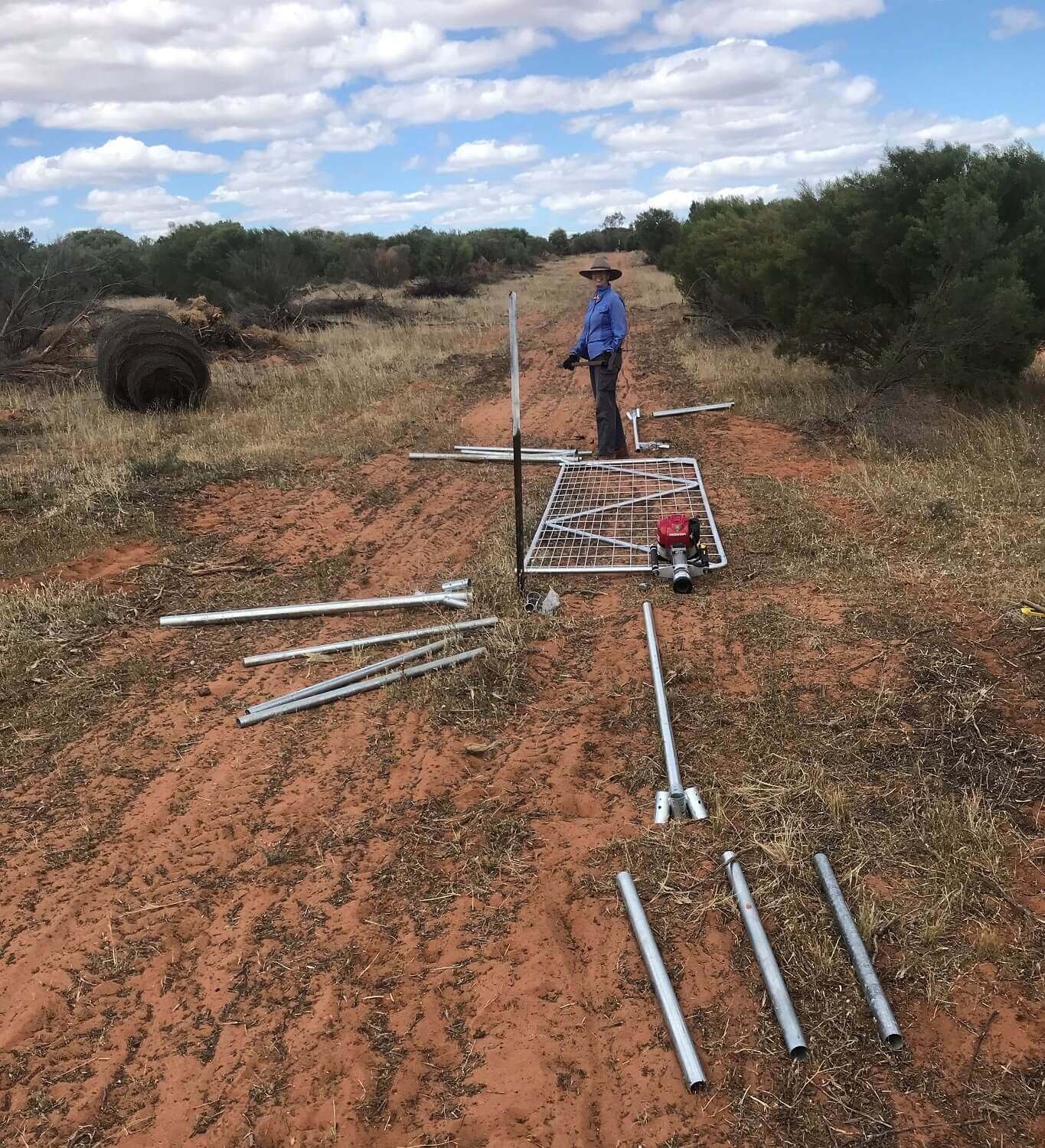Fencing progress
I think I've mentioned (once or twice) that this year, we're adding 7.6km to complete our 13 km conservation fence. We're pretty fussy about the contractors we will use on our conservation property. For our new fence, we needed contractors who understand that they'll have to squeeze the fence past the tree, around the bush, avoid the tiny plants marked with flagging tape (they're endangered), and rescue lizards.
That's all in a day's work for TMCenviro Thanks guys, for being so careful when fencing.
In October 2021, our contractors were able to erect 5.3 km of Gallagher Westonfence (hooray).
Well, that was fun the first few times ...
In a rush of naive enthusiasm, I decided we could build the final 2 km of conservation fence ourselves. In the never-ending list of stuff I didn't learn at uni ... this is me putting in the anchors for the gate posts using a Bullmax post driver. There are nine posts to drive for each strainer-stay setup. Really regretting all those corners and gates now ... Volunteers welcome!
Real fencers can tie knots in wire like it is string. Then there’s the rest of us.
Luckily for me, there are some really clever people out there who have some cool bits and pieces to make fencing easier. Every corner On our fence needs sixteen wires secured and six insulators (the white bits) to keep the electricity away from the strainer post.
Introducing ...
The gripple - joins two wires and the cleverly named gripple tool can be used to strain up short sections of fence.
The ratchet insulator - love this one. Thread one end of wire in and strain up using the locking ratchet. They’re a bit expensive so we use them on the special high conductivity wire because it doesn’t like gripples so much.
The spiralfast joiner - the person who invented this is super clever. Simply twist the two ends of wire along the spiral and it is held fast, as the name suggests. Amazing.
The insulator-with-a-tail (not its real name) - just wraps around the post, no knots required!
Endlessly impressed with clever Aussies and their fencing inventions. Thank you.
Our fencing project is supported by the Victorian Government through the Community Volunteer Action Grants, the Australian Government through the Murray-Darling Healthy Rivers Program, a Gallagher - Landcare Australia grant, and with help from Bio R and the Jesse Chaplin-Burch Trust and People and Parks Foundation.













